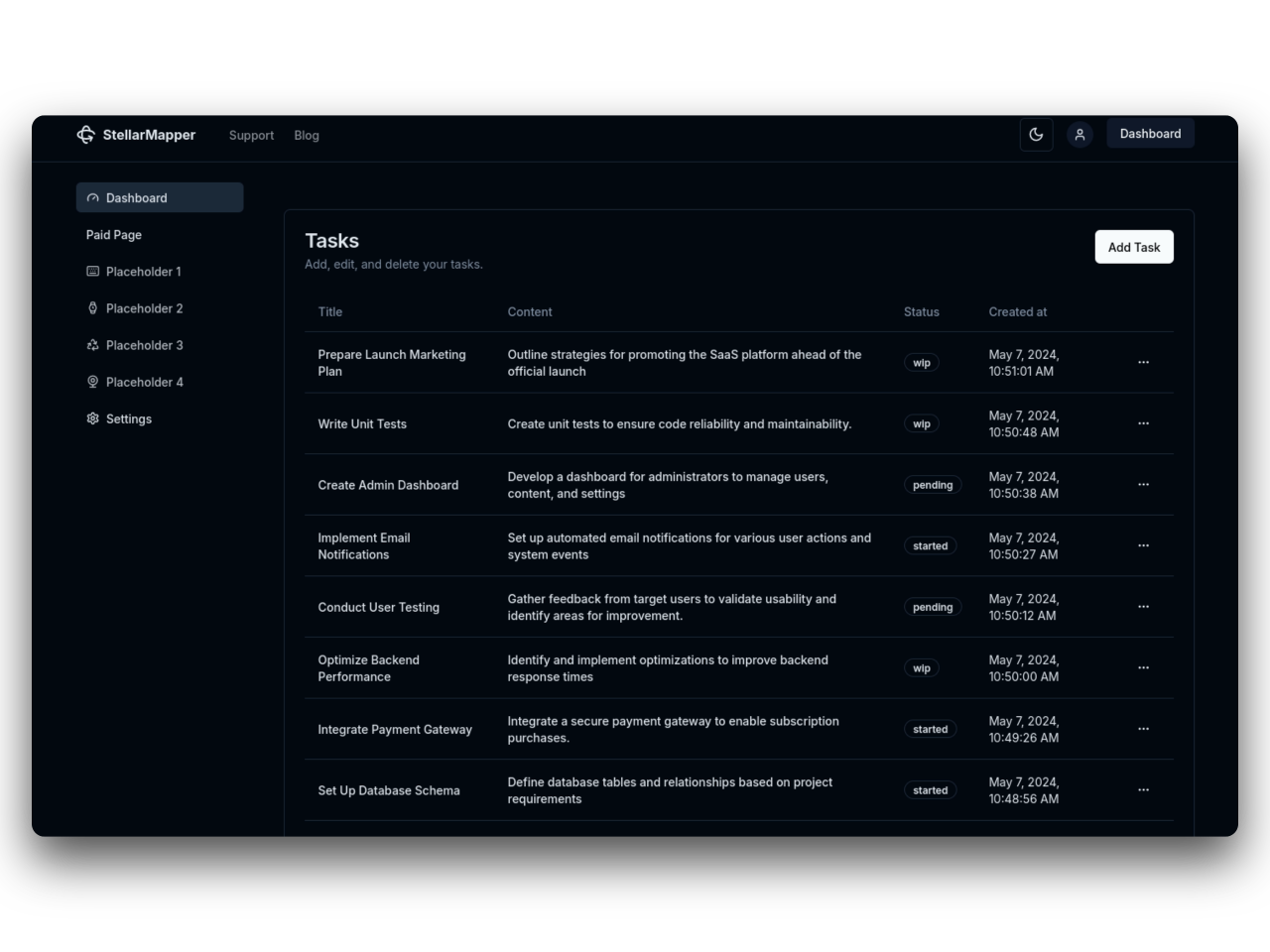Top Features of a Next.js SaaS Boilerplate
Top Features of a Next.js SaaS Boilerplate
Developing a Software as a Service (SaaS) application can be a daunting task. From backend architecture to frontend user experience, there are numerous elements to consider. Thankfully, Next.js provides an excellent framework for building scalable and efficient web applications. A Next.js SaaS boilerplate can save you countless hours of development time, allowing you to focus on your application's core functionality rather than on repetitive tasks. In this article, we will explore the top features that a good Next.js SaaS boilerplate should have.
1. Authentication and Authorization
One of the foundational features of any SaaS application is user authentication and authorization. A well-structured boilerplate will include:
- User Registration and Login: Seamless integration of sign-up and log-in processes.
- Social Auth: Support for third-party login providers, such as Google, Facebook, and GitHub.
- Role-Based Access Control (RBAC): Different user roles that dictate permissions across your application.
- JWT Tokens: Utilization of JSON Web Tokens for maintaining user sessions securely.
Implementing these features from scratch can be complex and time-consuming, so having them ready to go in a boilerplate can be incredibly valuable.
2. API Integration
Modern applications often rely on APIs for various functionalities, such as retrieving data or processing payments. Here are some key API-related features:
- RESTful and/or GraphQL APIs: Easy-to-implement APIs that follow industry standards for interoperability.
- External API Integrations: Pre-configured setups for integrating popular services (like payment processors, email services, etc.).
- API Rate Limiting and Caching: Built-in mechanisms to handle load on your APIs.
A boilerplate that includes these features allows developers to extend their applications quickly and efficiently.
3. Responsive UI Components
User experience is at the forefront of any application. A good boilerplate will offer:
- Component Library: A set of pre-built UI components that are responsive, accessible, and customizable.
- CSS-in-JS: Integration of libraries like Styled Components or Emotion for modular and dynamic styling.
- Dark Mode Support: A growing trend in user interfaces that caters to different user preferences.
By focusing on UI right from the start, your application will attract and retain users more effectively.
4. State Management
Managing state effectively is crucial for any web application. Look for a boilerplate that incorporates:
- Context API or Redux: A state management library to handle application state consistently.
- React Query: A powerful tool for managing server state, caching, and background updates.
Proper state management helps maintain data flow consistency, especially in SaaS applications where multiple components may rely on the same data.
5. Database Integration
Next.js SaaS applications often require persistent storage. A robust boilerplate will include:
- ORM Support: Integration with an object-relational mapping library like Prisma or Sequelize.
- Database Migrations: Built-in tools for managing database schema changes over time.
- Seamless Connection to Popular Databases: Compatibility with databases like PostgreSQL, MySQL, or MongoDB.
By offering an easy way to manage database connections and data models, a boilerplate lays a solid foundation for your application.
6. Environment Configuration
Every SaaS app has multiple environments (development, testing, production). Look for features like:
- Environment Variables: Built-in configuration to handle sensitive information like API keys and database credentials securely.
- Deployment Configuration: Instructions or scripts for deploying your application to cloud providers or platforms like Vercel, Heroku, or AWS.
Streamlined environment management can save developers significant time, especially when moving between different stages of the development lifecycle.
7. Internationalization (i18n)
If your target audience spans multiple countries, localization is crucial. A solid boilerplate will offer:
- Multi-Language Support: Built-in methods for implementing translations and locale management.
- Automatic Language Detection: Detection of user language preferences to serve the appropriate language.
With internationalization built-in, you can appeal to a broader audience without excessive rewrites or additional libraries.
8. Performance Optimization
Performance is key to user satisfaction. Good Next.js SaaS boilerplates will include:
- Code Splitting: Automatic splitting of larger files into smaller chunks, leading to faster initial loads.
- Image Optimization: Built-in support for optimizing images using Next.js’s Image Optimization API.
- Static Site Generation (SSG): Options to pre-render pages at build time for better SEO and performance.
By focusing on performance optimization right from the start, you set your application up for success.
9. Testing Framework
Quality assurance is essential for any SaaS application. Look for integration with testing frameworks that allow you to:
- Unit Testing: A setup for testing individual components and functions.
- End-to-End Testing: Automated testing for user workflows to ensure functionality.
- Continuous Integration/Continuous Deployment (CI/CD): Pre-configured workflows to automate the testing process with platforms like GitHub Actions or CircleCI.
Having a robust testing suite in place helps catch issues early and improves the overall quality of your application.
10. Analytics and Monitoring
Understanding user behavior can inform your future development and marketing strategies. A robust boilerplate should include:
- Integration with Analytics Tools: Easy setups for tools like Google Analytics, Mixpanel, or Amplitude.
- Error Tracking and Monitoring: Integration with services like Sentry or LogRocket for real-time error tracking and debugging.
By including analytics and monitoring features, you can make data-driven decisions that enhance your application's usability and effectiveness.
Conclusion
Building a SaaS application with Next.js is an exciting venture, and starting with a comprehensive boilerplate can significantly ease the journey. By focusing on critical features like authentication, state management, database integration, and more, you can lay a solid foundation for your application while concentrating on delivering valuable functionality to your users. Always evaluate boilerplates based on your specific needs and project requirements, ensuring that you choose one that fits your vision and goals. Happy coding!
